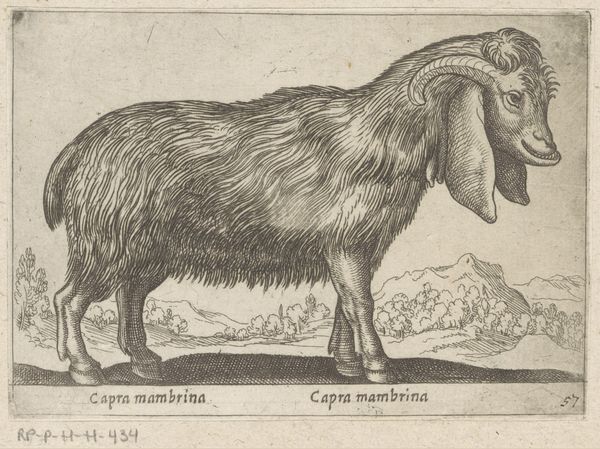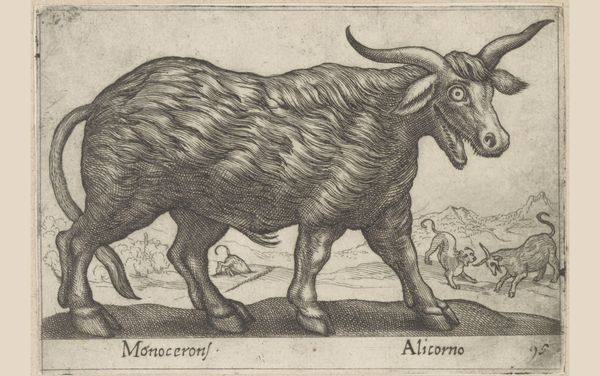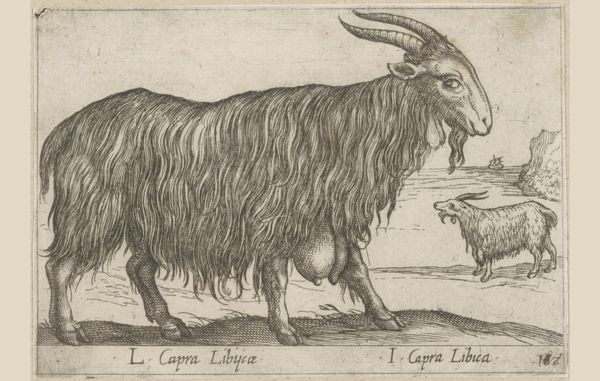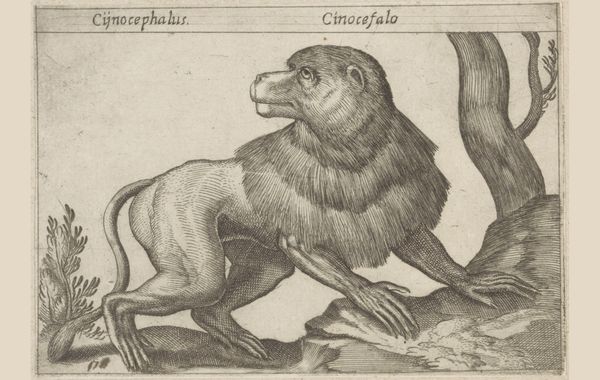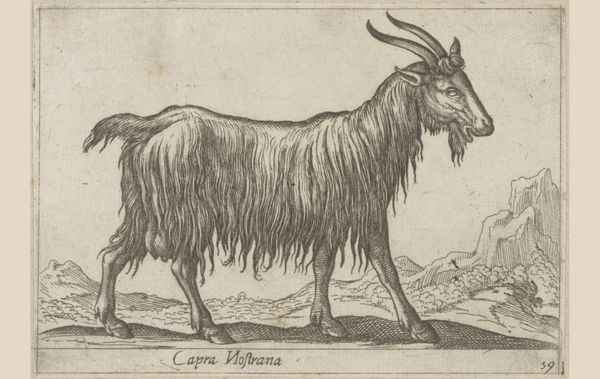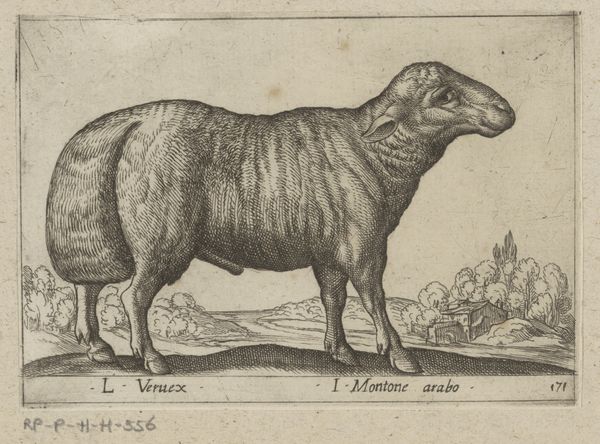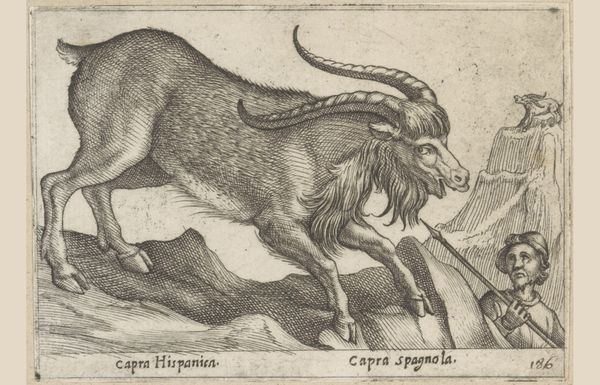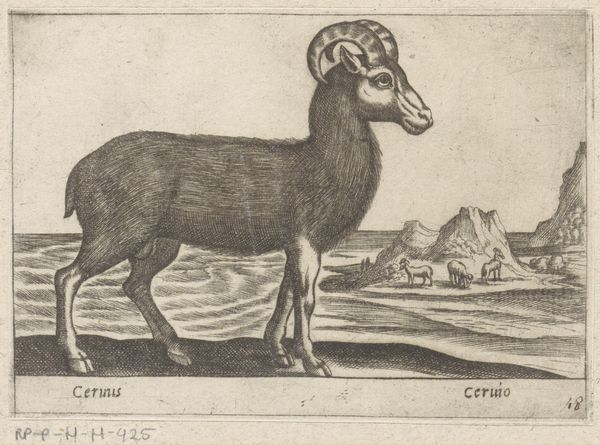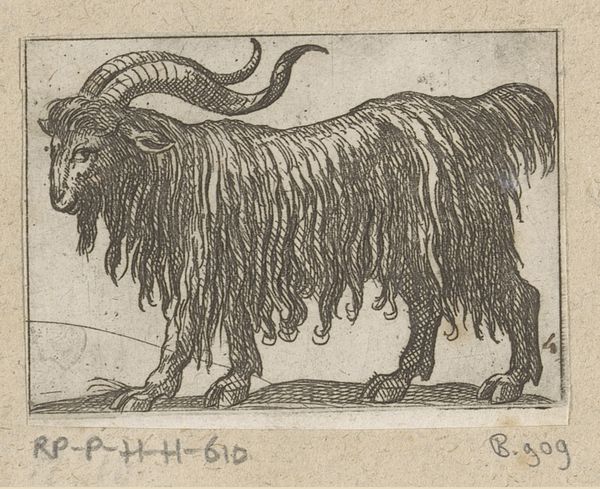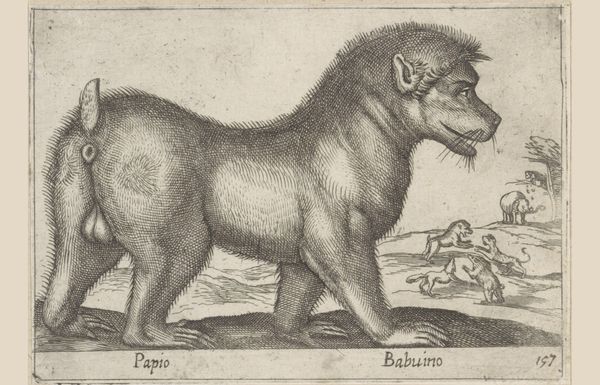
drawing, print, engraving
#
drawing
#
animal
# print
#
old engraving style
#
figuration
#
11_renaissance
#
line
#
engraving
#
realism
Dimensions: height 95 mm, width 137 mm
Copyright: Rijks Museum: Open Domain
Antonio Tempesta made this engraving of a one-horned goat in the late 16th or early 17th century. The image is full of ideas and concepts relating to the culture of its time. The image creates meaning through visual codes and cultural references. It reflects the early modern fascination with the natural world, and with the idea of the monstrous or the strange. Italy at this time was deeply affected by the Renaissance, and artists turned to classical sources for inspiration. This engraving, with its detailed rendering of the goat's anatomy and its Latin inscription, reflects that classical influence. The one-horned goat also speaks to the period's interest in the exotic, and in cataloging the wonders of nature, even those that might seem impossible. Did it comment on the social structures of its time? Is it self-consciously conservative or progressive? Does it critique the institutions of art? As a historian, I would want to research the cultural significance of goats and unicorns in the 16th and 17th centuries, looking at bestiaries, emblem books, and other sources. The meaning of this image is contingent on the social and institutional context in which it was made and viewed.
Comments
No comments
Be the first to comment and join the conversation on the ultimate creative platform.
